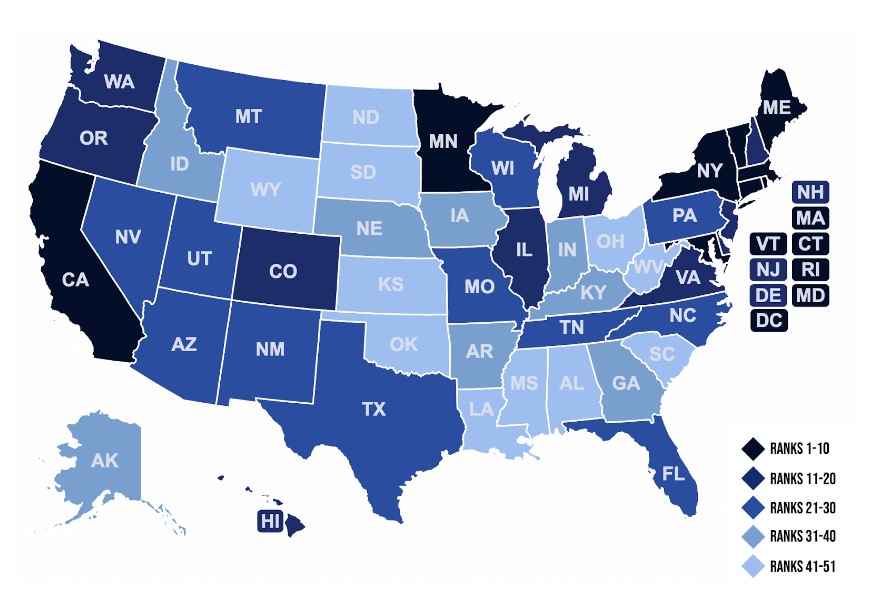ACEEE has released the 15th edition of their State Energy Efficiency Scorecard. The analysis looks at all 50 states to evaluate how well their policies address climate change, with a particular focus on energy efficiency measures.
What the top ranked states have in common is energy policies and wide reaching programs that reduce emissions from transportation, buildings and industry. They’ve enacted sweeping clean energy laws in recent years and expanded energy efficiency measures to achieve climate goals. In each of these top states, we see innovative and creative measures uniquely adapted to the needs of their residents and local energy infrastructure, while tackling climate change challenges.
In each region, ACEEE picked states to watch as promising models for their neighbors regionally: California in the West, Colorado in the Southwest, Minnesota in the Midwest, Virginia in the South and Massachusetts in the Northeast.

The state of Massachusetts, Sense’s home, offers a model for other states in the Northeast and across the US. In August 2022, Governor Baker launched new efforts to support state net zero emissions goals by signing an act to support offshore wind and solar development. The law also included measures to support transportation electrification and end the sales of internal combustion vehicles after 2035. A 2021 climate law established new greenhouse gas reduction goals for energy efficiency problems, including heat pump deployments and home energy retrofits.
This year’s scorecard has expanded the focus on equity to assess which states are reducing energy burdens for low income and disadvantaged households. For instance, Massachusetts, New York and California have all prioritized better serving low-income and environmental justice communities with energy efficiency incentives like heat pump deployments and weatherization improvements, similar to measures in the Inflation Reduction Act. Maine, which moved up in this year’s scorecard into fifth place, has enacted legislation that requires new affordable housing funded by the state to be all electric and include EV charging.
The policy changes by top states reflect the recognition that a decarbonized, digitized grid and the electrification of homes and vehicles is the most viable path to reducing the carbon impact of homes and transportation. A common thread in the top ranked plans is the role of consumers. In the residential sector, which accounts for 22% of U.S. energy usage, consumer decisions have an enormous impact on the success or failure of energy efficiency and demand flexibility programs.
Consumers will play a crucial role in the energy transition, and their actions will be informed by utility programs and state policies. Whether to buy an EV, install a heat pump or weatherize a home are all decisions that consumers will make as they evaluate their budgets and incentives from utilities and local government states. To make those decisions, consumers need a better understanding of their own home’s energy usage and how to make their homes more efficient.
At Sense, we focus on the consumer role in the success of energy providers’ climate change programs. We’ve partnered with next generation meter manufacturers such as Landis+Gyr to give people real-time insights that drive engagement and prompt actions that lower costs and energy usage. By bringing Sense intelligence to millions of homes, in partnership with energy providers, we are helping people and the grid evolve to address climate change.
